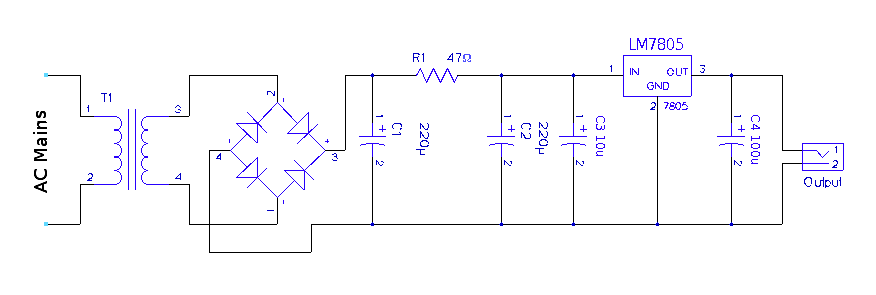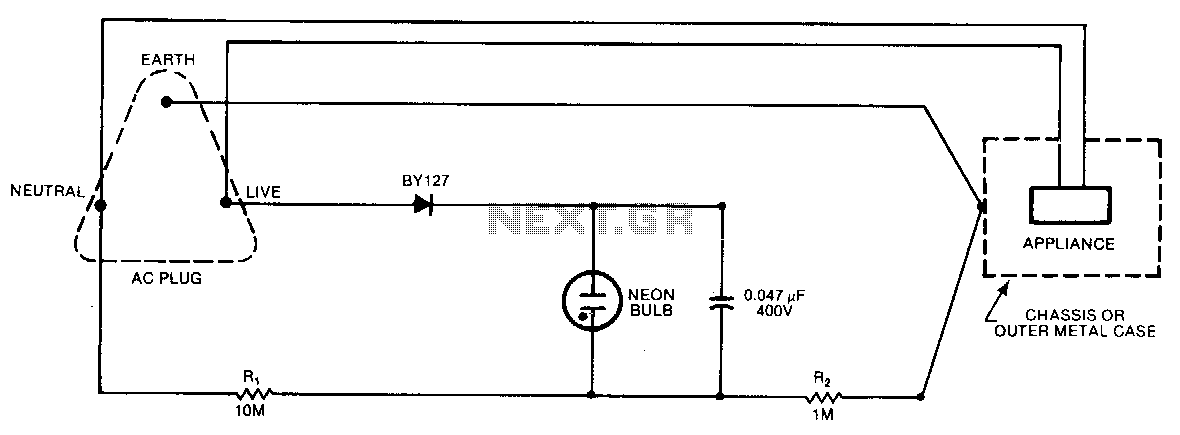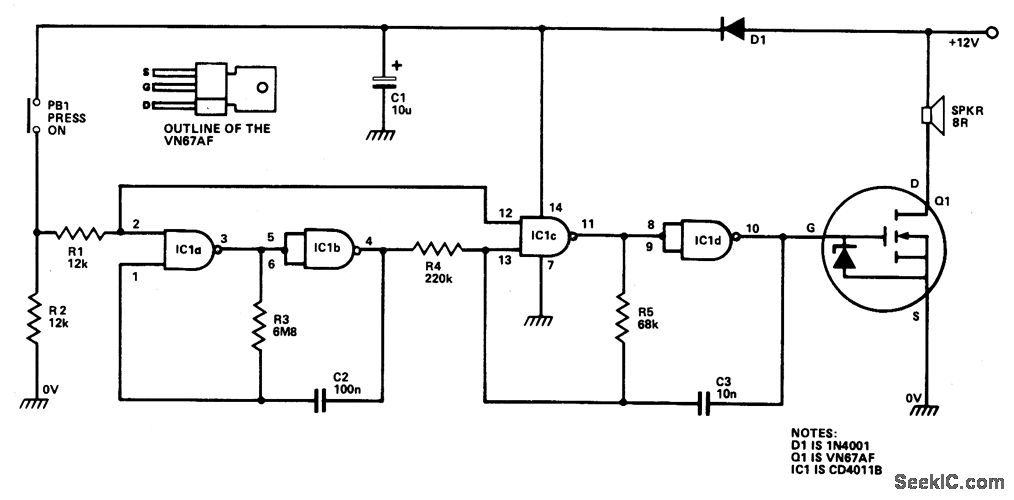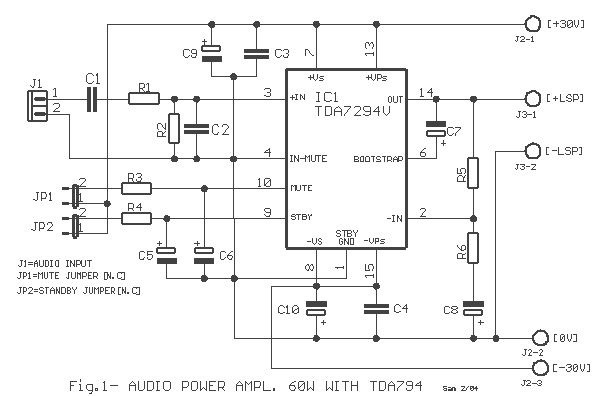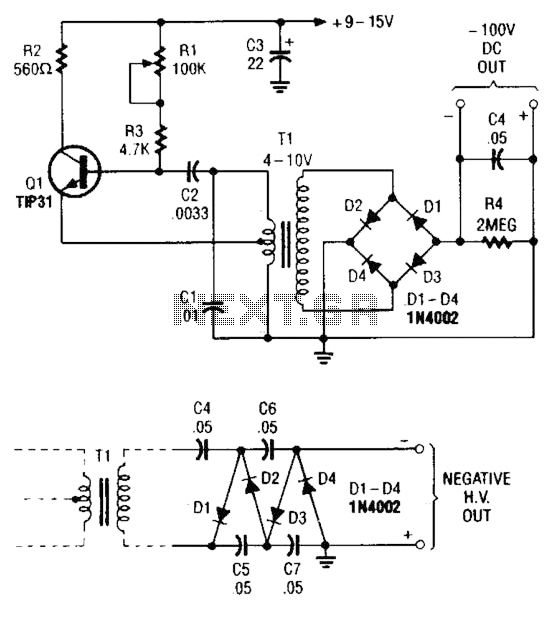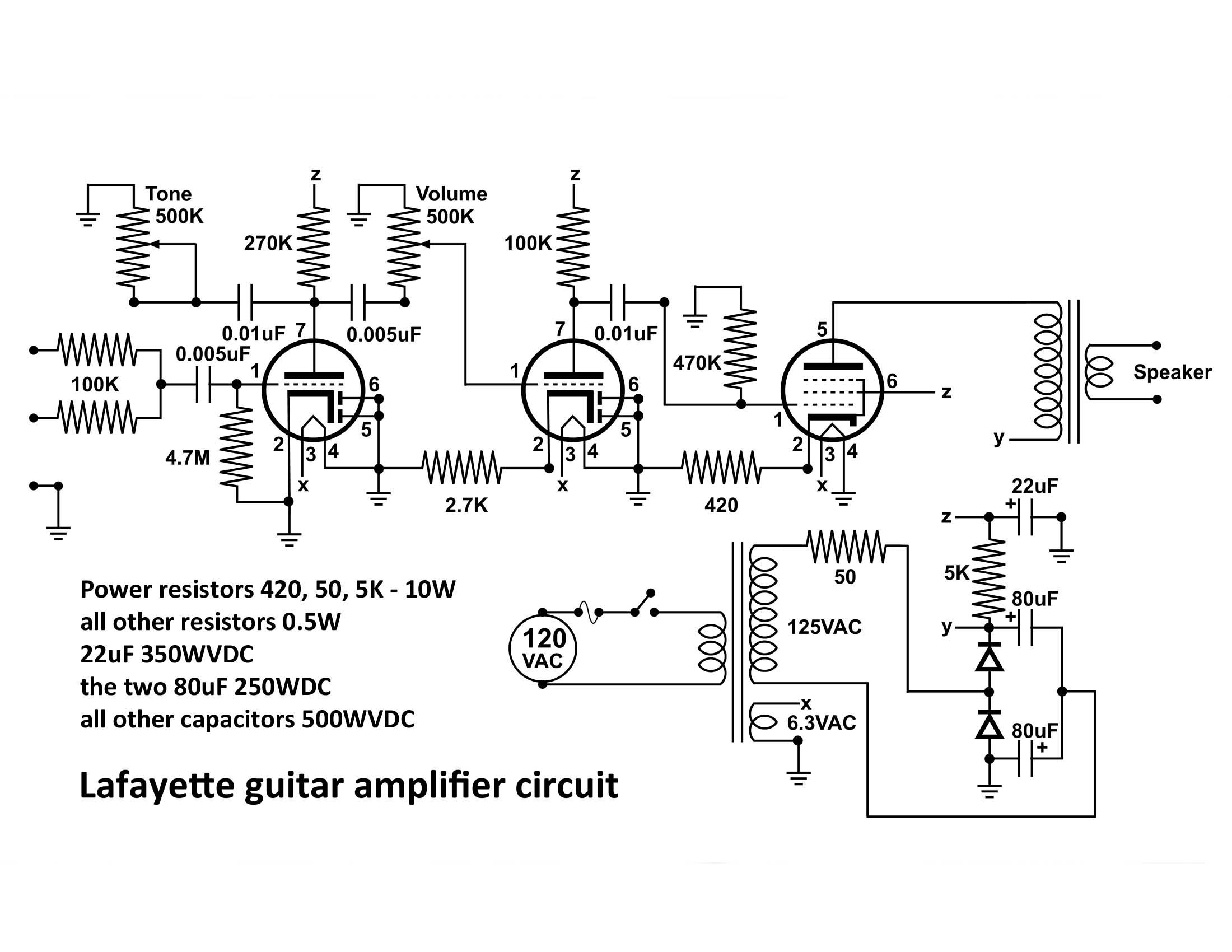
Schematics Low-Ripple Power Supply
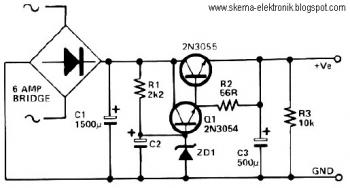
This circuit can be utilized in applications requiring high current and low ripple voltage, such as in high-powered Class AB amplifiers where high-quality audio reproduction is essential. Q1 and Q2, along with resistor R2, function as a power Darlington transistor pair. Zener diode ZD1 and resistor R1 establish a reference voltage at the base of Q1. The value of ZD1 must be selected such that ZD1 = Vout - 1. Capacitor C2 can be selected based on the desired level of voltage smoothness, as its effective capacitance is amplified by the combined gains of Q1 and Q2. For instance, if a 100 µF capacitor is chosen for C2 and the minimum hFE for Q1 and Q2 is considered, the effective capacitance can be calculated as C = 100 µF × 15 (gain of Q1) × 25 (gain of Q2) = 37,000 µF.
This circuit configuration is particularly advantageous for applications where a stable output voltage is crucial, and the ability to handle high current loads with minimal voltage fluctuations is necessary. The Darlington pair configuration of Q1 and Q2 allows for significant current amplification, which is essential in driving heavy loads typically encountered in audio amplification scenarios. The choice of ZD1 is critical, as it sets the operating point for Q1, ensuring that the transistor operates within its optimal range for linearity and efficiency.
The reference voltage provided by ZD1 and R1 must be carefully calculated to ensure that Q1 remains in the active region, preventing distortion in the output signal. The selection of C2 is also vital; a larger capacitance will yield better smoothing of the output voltage, reducing ripple. The effective capacitance can be adjusted by varying C2, thereby influencing the overall performance of the amplifier. This adaptability allows for fine-tuning of the circuit to meet specific performance criteria, making it suitable for high-fidelity audio applications.
In summary, this circuit design effectively combines the advantages of a Darlington transistor configuration with careful voltage regulation and capacitance selection, resulting in a robust solution for high-current, low-ripple voltage applications such as high-powered Class AB amplifiers.This circuit can be used where a high current is required with a low-ripple voltage (such as in a high-powered class AB amplifier when high-quality reproduction is necessary). Q1, Q1 and R2 can be regarded as a power Darlington transistor. ZD1 and R1 provide a reference voltage at the base of Q1. ZD1 should be chosen thus: ZD1=Vout-1. 2. C2 can be chosen for the degree of smoothness as its value is effectively multiplied by the combined gains of Q1/Q2, if 100uF is chosen for C2, assuming minimum hfe for Q1 and Q2, C=100x15(Q1)x25(Q2)=37, 000uF. 🔗 External reference
This circuit configuration is particularly advantageous for applications where a stable output voltage is crucial, and the ability to handle high current loads with minimal voltage fluctuations is necessary. The Darlington pair configuration of Q1 and Q2 allows for significant current amplification, which is essential in driving heavy loads typically encountered in audio amplification scenarios. The choice of ZD1 is critical, as it sets the operating point for Q1, ensuring that the transistor operates within its optimal range for linearity and efficiency.
The reference voltage provided by ZD1 and R1 must be carefully calculated to ensure that Q1 remains in the active region, preventing distortion in the output signal. The selection of C2 is also vital; a larger capacitance will yield better smoothing of the output voltage, reducing ripple. The effective capacitance can be adjusted by varying C2, thereby influencing the overall performance of the amplifier. This adaptability allows for fine-tuning of the circuit to meet specific performance criteria, making it suitable for high-fidelity audio applications.
In summary, this circuit design effectively combines the advantages of a Darlington transistor configuration with careful voltage regulation and capacitance selection, resulting in a robust solution for high-current, low-ripple voltage applications such as high-powered Class AB amplifiers.This circuit can be used where a high current is required with a low-ripple voltage (such as in a high-powered class AB amplifier when high-quality reproduction is necessary). Q1, Q1 and R2 can be regarded as a power Darlington transistor. ZD1 and R1 provide a reference voltage at the base of Q1. ZD1 should be chosen thus: ZD1=Vout-1. 2. C2 can be chosen for the degree of smoothness as its value is effectively multiplied by the combined gains of Q1/Q2, if 100uF is chosen for C2, assuming minimum hfe for Q1 and Q2, C=100x15(Q1)x25(Q2)=37, 000uF. 🔗 External reference
